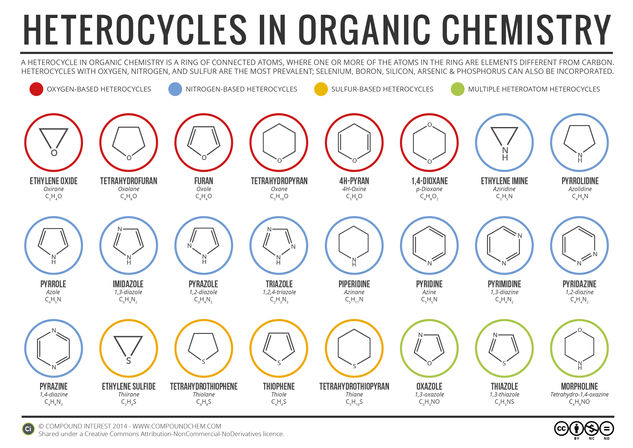© Compound InterestA Guide to Simple Heterocycles in Organic Chemistry
We’ve already examined the functional groups that can be present in organic molecules in a previous post; here, we take a look one step further, at heterocycles. Heterocycles are hugely important in organic chemistry – they make up more than half of all known organic compounds. Caffeine is a prime example of an everyday chemical that is composed of heterocycles, as is nicotine, and there are plenty of others in pharmaceuticals and natural products we use on a natural basis. Parts of our DNA are even made up of compounds which contain heterocycles.
Perhaps as a result of the wide range of possible heterocycles, their naming can sometimes seem a little more complicated. For many heterocycles, discovered several generations ago, archaic names are still preferred to the more systematic names that are used for more recent discoveries. All heterocycles can, however, be referred to by these systematic names, which are given in italics under the more commonly used names in the graphic above.







